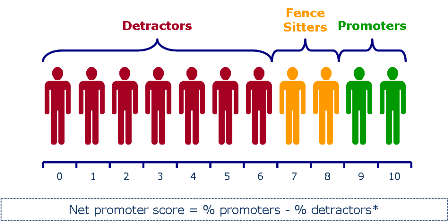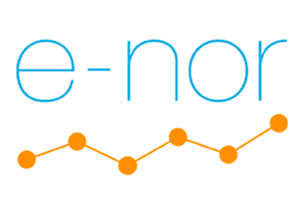
At ReadMe, a startup that makes API documentation easy, they keep a sign on the wall to remind them of their business philosophy. It’s the Y Combinator slogan: “Make something people want.” Customer feedback still drives their entire business model—it didn’t stop when they left the accelerator.

(via Alvy Brooks)
We wanted to find out if other companies use customer feedback like ReadMe does, so we interviewed marketers at top SaaS companies about their model. We discovered that even though most people associate feedback with customer success, it drives the way these companies do their whole business strategy.
Here are the details of what we learned, and the best ways to incorporate customer feedback in your business.
Use Feedback to Clinch Conversions
Customer feedback means visitors give you answers to your most pressing questions.
It’s not enough just to look at your analytics. You have to know the reasons behind your numbers. You might know that your bounce rate increased by 25%, but you don’t know why. Knowing why you’re getting your statistics is the key to taking informed action.
You can use the “why” answers you get from customer feedback to optimize your website to increase conversions. For example, use an exit survey to find out why visitors are bouncing from your features page. It could be because they think you don’t offer the solution they’re looking for, even though it’s listed at the bottom of the page. With that knowledge, you can change your design, whether it’s marketing copy or website interface, to highlight the solution they’re interested in.
From our interviews, we found that implementing customer feedback isn’t just about keeping your current customers happy—you can use it to attract new ones. Using surveys let you know what you’re doing right and wrong with your customers, and you can optimize your website for maximum conversions based on that information.
How I Done This Changed Its Rhetoric
Teri Wilson, CEO of productivity tool I Done This, told us about how she used Qualaroo’s survey platform to shift the company’s focus from a free individual tool to a premium one for teams. After they rolled out their premium version, they had tons of new traffic on their web page, but few paid conversions. So they surveyed everyone who signed up for their free trial.

[source]
The results of the survey showed that their website copy was still convincing individuals, rather than teams, to sign up. After that, they changed their marketing strategy to use the word “team” more frequently. Using an Optimizely integration, they also A/B tested to discover that users responded better if the word “team” was in bold typface on the center of the page.
I Done This used customer feedback to determine who their marketing copy wasn’t speaking to, and shifted their strategy based on what they found.
Use Feedback to Develop Features
Customer feedback should be the driving force for all product development, not just the initial idea.
Imagine you don’t know what feature to build next. You’ve honed your UI, fixed your onboarding, and added push notifications. Your product is everything you wanted it to be when you started the business. But you don’t know where to go from there.
The answer is to solve for your customers’ pain points. Use customer feedback to figure out where they’re struggling—maybe they hate the interface, maybe they want faster loading times—and build based on what will give them value. If your product isn’t the best of its kind, your customers will churn. Even if it’s the best of its kind now, you can’t guarantee it will always be.
If you develop with the goal of solving your customers’ problems above all else, you’ll have a better product. Implementing customer feedback won’t just keep your current customers happy, it will create a stickier product for all customers—current and future.
How InsightSquared Changed Its Product Roadmap
Sarah Bolt, Customer and Events Marketing Manager at sales analytics tool InsightSquared, used surveys to develop their product roadmap. She surveyed different key stages in the user lifecycle, checking in with new customers who had just gone through the onboarding process, and older ones who subscribe month-to-month. Asking for feedback at users’ different stages of understanding helped her identify their pain points over time.
“About halfway through this year, our product team made major adjustments in the roadmap,” she explained to us. “We ultimately decided to cut building new features to solve for the biggest pain points our customers were seeing.”
When the developer team halted progress on new features to dedicate time to fixing customer problems, InsightSquared put its pride aside to make their customer’s lives easier. Customer feedback became the driving force behind their product strategy.
Use Feedback to Get More Feedback
Normally, you use your Net Promoter Score (NPS) data for quantitative feedback. It’s a numerical way to interpret customer satisfaction and referral likelihood. But NPS doesn’t have to be just a number.
You can use it to deepen customer relationships and brand trust. Brand trust is indispensable in the SaaS model—even if you’re growing your business, the only way you can profit is if you keep your customers from churning.

[source]
But regardless of what that number turns out to be, NPS is a way to identify the individuals who care about your company. Everyone who fills out an NPS survey, whether they’re a detractor, a fence sitter, or promoter, relies on your product in some way. Otherwise, they wouldn’t even spend a couple clicks worth of effort to give you advice.
By identifying the customers who care, NPS surveys can pave the way for deeper, qualitative conversations. You can call an unhappy customer to discuss how to fix their problems, or follow up with a happy one about what they’d like to see improved.
Customer feedback isn’t just about quick-fixing customer problems—it should build a relationship. Showing a customer you take their feedback seriously by following up post-survey lets them know you care about them, and that you’re willing to accommodate their requests. Even if they’re not 100% happy with your product, they can be confident that your team is working to meet their needs.
How ReadMe Used a Feedback Pipeline
ReadMe used a feedback pipeline, starting with an NPS survey, to increase brand trust and loyalty.
Ashley Chang, Product and User Experience Manager, explained how their team emailed everyone who responded to the NPS survey to invite them to have a deeper conversation. From there, everyone who gave feedback over email was invited on a customer call, where customers could talk about improvements they wanted to see and features that they wanted the ReadMe team to develop.
When ReadMe pursued each customer, they let them each individually know that ReadMe cared about their feedback. They weren’t pressing a button and sending a form into the abyss—they got to chat with the team that developed a product that made their lives better. Customer feedback builds the kind of brand trust necessary to prevent churn and keep your business thriving.
Align Your Goals With Your Customers’
Feedback ultimately isn’t for your developers—it’s for your customer. It circles back into everything you do, because everything you do—whether it’s sales or product development—should be for your customer.
ReadMe keeps the Y Combinator slogan on the wall because the customer-first attitude infiltrates their entire business model. Putting the customers’ needs before your own is the only way to keep users from finding something better and churning. If you use feedback to have your finger constantly on the pulse of what your customers want, like ReadMe, you’ll reap the rewards.
Want insights that improve experience & conversions?
Capture customer feedback to improve customer experience & grow conversions.





